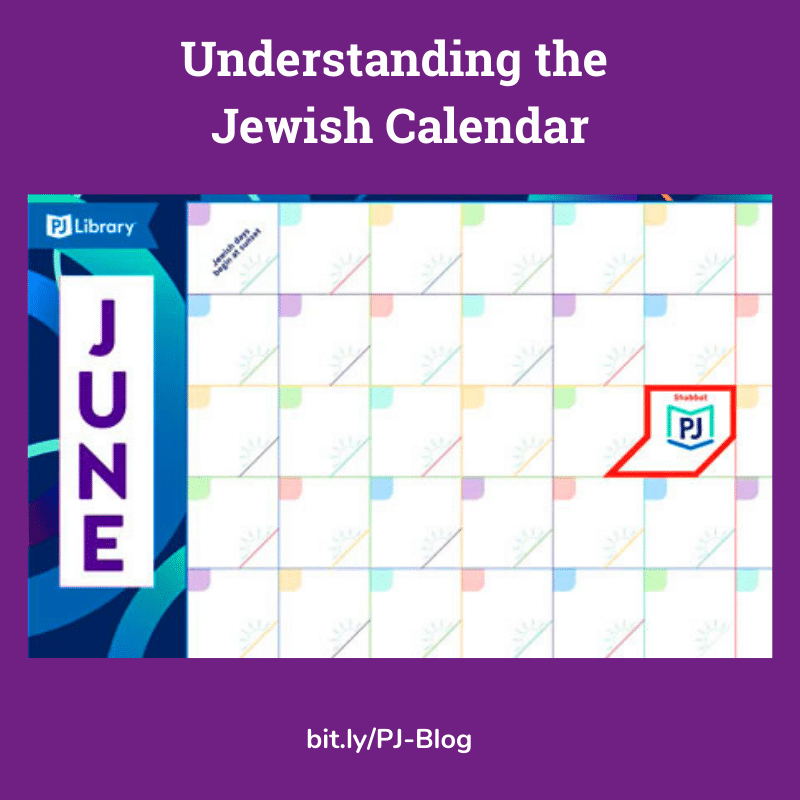Understanding the Jewish Calendar
We know we are discussing Rosh Hashanah at the beginning of August, but don’t blame us: Blame it on the moon!
The Jewish months and holidays are based on the lunar calendar—a 28-day cycle that reflects the waxing and waning of Earth’s moon. Some holidays are set when the moon is at its brightest to allow for additional light for evening gatherings, which was particularly useful in ancient times. When needed, the Jewish calendar adds a “leap month” (a second month of Adar, which is when Purim is observed) to make sure we are never celebrating a fall harvest holiday in the early summer. With this year’s High Holidays starting on Labor Day and Chanukah starting Thanksgiving weekend, we will need the Adar II next spring!
Jewish holidays also begin at sundown, partly because it’s noted in Genesis that God created “night then day.” It can be confusing, but the special gift being sent with your child’s book this month can help solve the problem: the brand-new PJ Library Perpetual Jewish Calendar! With a design that makes it clear how the holiday starts at sundown, you’ll be ready to celebrate all the holidays, no matter when they arrive!
After all, Jewish holidays, like wizards, are never late nor early but arrive precisely when they are meant to.*
Take care,
Sarah
* “A wizard is never late, nor is he early; he arrives precisely when he means to!”
— Gandalf the Grey, in The Lord of the Rings: The Fellowship of the Ring by J.R.R. Tolkien
Additional Resources
- How to Use Your Calendar (PJ Library)
- Crash Course in Jewish Holidays (PJ Library)
-
Follow the Moon (PJ Library)
- High Holidays: New Ideas for a New Year (The Jewish Federation of Greater Washington)

